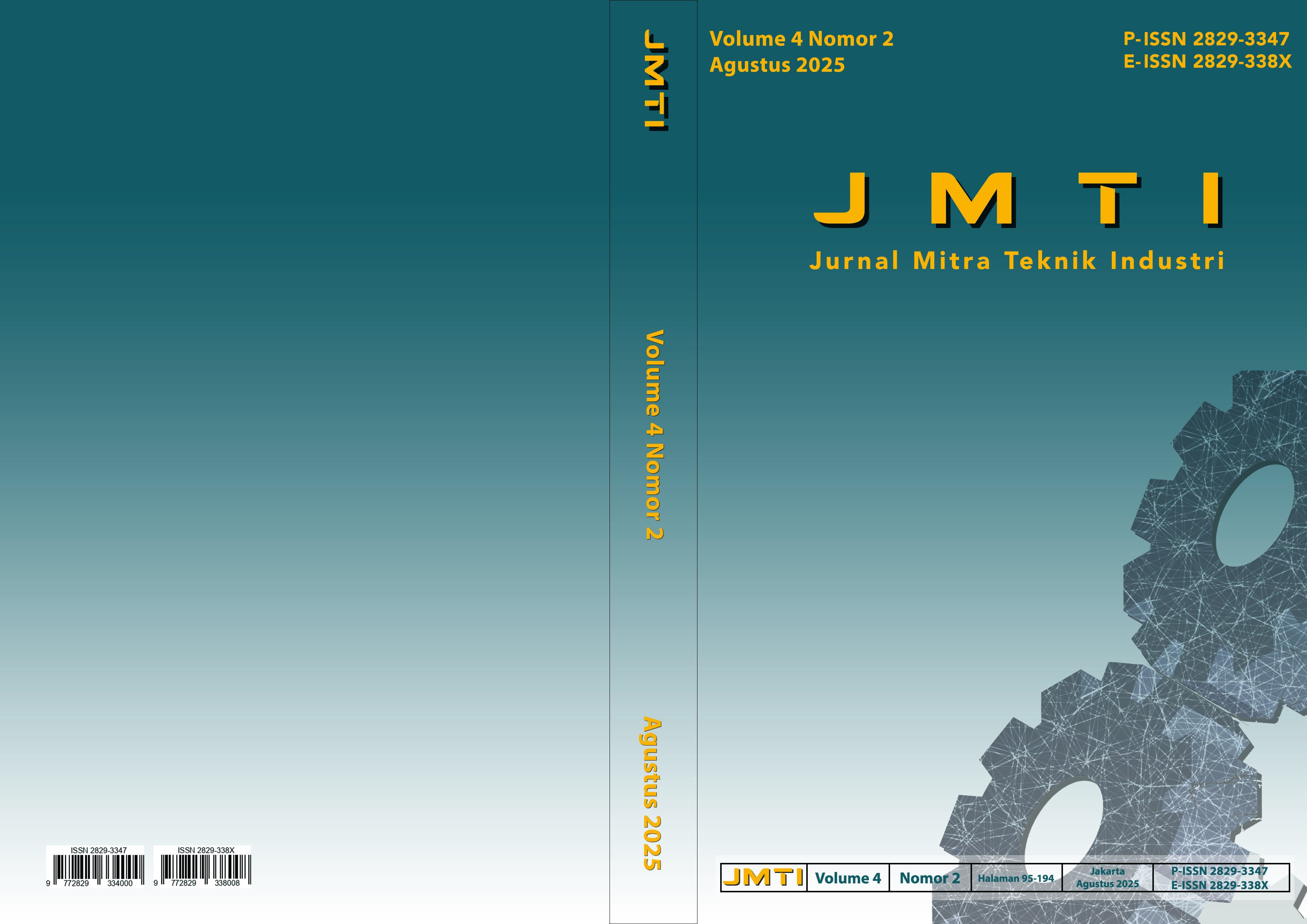EVALUASI ERGONOMI DAN ESTETIKA GAGANG WAJAN: STUDI EKSPERIMEN PADA BERBAGAI WAJAN
Main Article Content
Abstract
The pan handle is a crucial component that influences the comfort, safety, and user perception of cookware. However, existing market designs often compromise on one of two fundamental aspects: ergonomics or aesthetics. This study aims to (1) evaluate the ergonomic and aesthetic aspects of ten different commercial pan handle designs, (2) analyze the correlation between these two aspects, and (3) apply the findings to design and validate a new, superior concept. An experimental method with a within-subject design involved 30 participants who performed a series of simulated use tasks and provided subjective ratings using a Likert scale. Data were analyzed using the Friedman test with a post-hoc Wilcoxon Signed-Rank test, and Spearman's rank correlation. The results showed highly statistically significant differences in the ergonomic (χ²(9) = 257.300, p < .001) and aesthetic (χ²(9) = 238.920, p < .001) ratings. Furthermore, a very strong and highly significant positive correlation was found between perceived ergonomics and aesthetics (ρ = .900, p < .001). These findings were then successfully applied to develop a physical prototype, which was validated with an ergonomic comfort score of 4.07 and an aesthetic score of 4.33. This research provides important implications for the holistic design of pan handles, emphasizing that the integration of functional and visual considerations is crucial for enhancing the overall user experience.
Article Details

This work is licensed under a Creative Commons Attribution-NonCommercial-ShareAlike 4.0 International License.
References
[1] M.F. Amanda, “Evaluasi Ergonomi Dental Chair dan Dampaknya Terhadap Produktivitas Kerja Dokter Gigi di Puskesmas Blang Geulumpang,” Jurnal KANAKA, vol. 3, no. 1, pp. 1-4, 2025.
[2] T.R. Fitrianto and R. Dharmastiti, “Evaluasi Produk Kaki Prostetik Bawah Lutut Berdasarkan Persepsi Pengguna Usia 15-64 Tahun,” Prosiding Sains Nasional dan Teknologi, vol. 1, no. 1, 2019.
[3] S. Luthfianto and Siswiyanti, “Pengujian Ergonomi dalam Perancangan Desain nProduk,” Prosiding Seminar Nasional Teknoin, 2008.
[4] S. Slamet, A. Sokhibi, S. Harmoko, Hariyanto, and Suyitno, “Kajian Aspek Ergonomi Face Shield untuk Covid-19,” Journal of Mechanical Design and Testing, vol. 3, no. 2, pp. 93-102, 2021.
[5] S. A. Sari, P. Vitasari, and E.R. Kusuma, “Evaluasi Aspek Ergonomi pada Desain Kursi
Taman,” Prosiding SENIATI, vol. 2, no. 1, 2016.
[6] C. Valerie, L. Widodo, and Adianto, “Modifikasi Meja Setrika Laundry Ergonomis
dengan Metode SCAMPER,” Jurnal Mitra Teknik Industri, vol. 3, no. 3, pp. 243–254, 2024.
[7] W.H, Herli, L. Widodo, and I.W. Sukania, “Pembuatan Alat Panjat Ergonomis untuk
Pemanenan Bunga Cengkeh dengan Metode SCAMPER,” Jurnal Mitra Teknik
Industri, vol. 3, no. 3, pp. 213–221, 2024.
[8] M.D. Kurniatie, D.A. Mayasari, D. Nurcipto, Aripin, and W.A. Prasetyanto, “Pendampingan dan Evaluasi Produk Kaki Prostetik bagi Kelainan Kongenital Kaki di Atas Lutut (Above Knee Prosthesis),” JATTEC- Journal of Appropriate Technology for Community Services, vol. 5, no. 1, pp. 58-66, 2024.
[9] A.R. Priyandini and A. Widyanti, “Evaluasi Produk Gendongan Bayi Menggunakan Metode Kansei Engineering,” Jurnal Optimasi Sistem Industri, vol. 19, no. 1, pp. 33-39, 2020.
[10] E. Nurmianto, A. Anzip, and N.P. Negoro, “Evaluasi Desain Ergonomi Alat Pengasapan Ikan untuk Pemberdayaan Masyarakat,” Jurnal Pengabdian Kepada Masyarakat Bina Darma, vol. 2, no.1, pp. 25-37, 2022.



